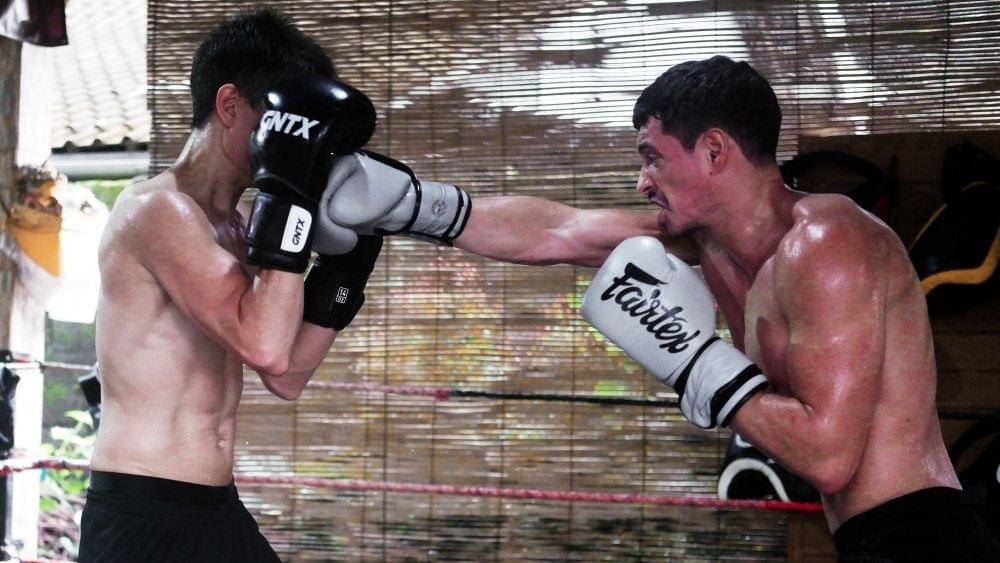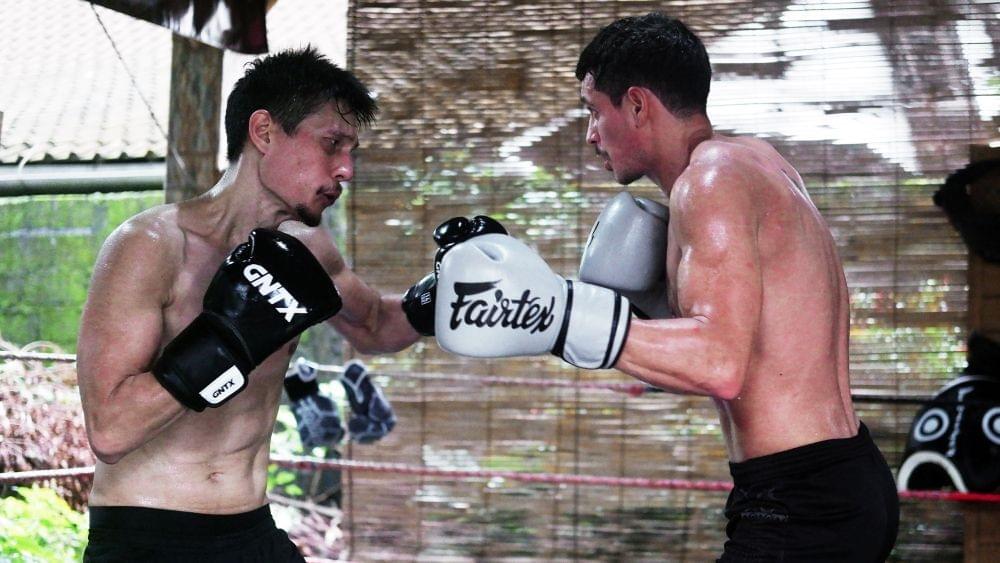In boxing, timing, rhythm, and precision often outweigh sheer power. One of the most underestimated tools in a boxer's footwork arsenal is the pendulum step, a deceptively simple yet deeply strategic movement that can change the outcome of a fight.
While casual observers may not notice it, the boxing pendulum step carries profound implications for balance, energy efficiency, and offensive timing. Let’s pull back the curtain on the pendulum bounce boxing technique and uncover the science that makes it so effective.
What the Pendulum Step Is and Why It Matters
At its core, the pendulum step is a rhythmic shift in stance that allows a fighter to close distance quickly, reset their position, or exit danger with minimal telegraphing. It's not a jump. It's not a shuffle. It’s a small, controlled hop that keeps both feet off the ground just long enough to create space or momentum.
Why does it matter? Because timing is everything in boxing. The pendulum step allows you to maintain pressure while staying evasive. It helps generate power from movement and aligns your body for counterattacks or feints. It’s also a fundamental piece of elite footwork strategy used by fighters like Vasiliy Lomachenko and Naoya Inoue.
What Actually Happens During a Pendulum Step
Despite its smooth appearance, the pendulum bounce boxing movement is a biomechanically efficient sequence involving a rapid transfer of weight. Here’s what’s going on:
- Muscle Engagement: The calves, hamstrings, and glutes initiate the lift. The core stays tight for stability.
- Momentum Control: Rather than a vertical bounce, the energy is directed slightly forward or backward depending on the intent, offense or defense.
- Center of Gravity: Your weight remains centered, ensuring you're ready to fire punches or defend immediately upon landing.
This transfer of kinetic energy is what allows the boxer to retain balance and explosiveness. It’s also why it’s so effective at setting traps and dictating the rhythm of a round.
How to Perform the Pendulum Step with Proper Technique
To execute the boxing pendulum step properly, precision and timing are key. Here’s a breakdown of how to do it.
- Start in Fighting Stance: Keep your lead foot slightly forward, hands high, and knees soft.
- Push Off the Back Foot: Use your rear leg to initiate a slight hop forward or backward. Your lead foot guides the direction.
- Land Softly: Land on the balls of your feet to stay springy and mobile. Avoid flat-footed landings.
- Maintain Guard: Keep your upper body still and your guard tight throughout the movement.
- Repeat Smoothly: The motion should feel rhythmic, like a pendulum swinging, not jumpy or rigid.
For beginners, practicing the pendulum step as part of shadowboxing or with a double-end bag can help build natural rhythm.
Pendulum Step Application In a Ring
The true effectiveness of the pendulum step becomes clear during sparring or competition. It’s not just a flashy movement; it's a tactical tool that experienced boxers use to control the pace, create openings, and defend with minimal effort.
Below are key ways this footwork method proves invaluable in the ring, each with a more in-depth look.
Range Control
The pendulum step gives a fighter the ability to manipulate distance with subtle precision. Stepping in with a forward pendulum bounce allows you to test your opponent’s reactions—will they bite on a feint? Are they ready to engage? With the backward pendulum, you can exit danger without fully disengaging, keeping yourself in a position to re-enter at will.
This dynamic movement is especially useful against aggressive opponents. Rather than retreating flat-footed, the pendulum step allows for a quick reset that maintains pressure while staying just outside the danger zone. You're not just moving back; you're loading your legs for a counter, staying balanced and fight-ready.
Power Punch Setup
Generating punching power isn't only about arm strength—it begins with your feet. The pendulum step adds forward momentum to your strikes, helping you punch through the target rather than just at it.
When timed correctly, the step can act like a mini springboard. A boxer might bounce forward with a pendulum step and let the bodyweight drive into a stiff jab or a snappy straight cross. This momentum, combined with proper rotation, can increase the impact without needing to overcommit or overextend.
Fighters use this especially when transitioning from defense to offense mid-exchange.

Angle Changes
Though the pendulum step moves you forward or backward, when paired with lateral footwork or pivots, it becomes a tool for changing angles fluidly. This helps break your opponent’s line of sight and defense.
For example, after executing a forward pendulum step to close the gap, a boxer might pivot off the lead foot and land a hook from an unexpected angle. This disrupts the opponent’s timing and positioning, creating opportunities for clean, unguarded shots. It’s an excellent tactic for outmaneuvering stationary or linear fighters who struggle with side-to-side movement.
Counterattack Readiness
Great footwork is reactive as much as it is proactive. The pendulum step keeps you in a semi-loaded position, where your body is primed to launch a quick counter the moment a window opens.
By staying light on the balls of your feet and maintaining a compact stance during the bounce, you’re always ready to explode into a counter punch or defensive maneuver. After slipping a jab, for instance, you can quickly pendulum back in with a sharp counter-cross, often catching your opponent mid-recovery.
Moreover, because the step doesn’t overcommit your weight forward or backward, you're never stuck. This balance is critical in exchanges where every fraction of a second counts.
Pendulum Step in Muay Thai: Adapt or Avoid?
The pendulum step has found its way into Muay Thai discussions, but does it belong there?
Muay Thai relies heavily on a grounded stance for stability in checking kicks and launching knees. Bouncing or hopping is not traditionally favored. That said, integrating elements of the pendulum step can work under the right conditions, especially in hybrid or modernized Muay Thai approaches like those seen at Ubud Muay Thai.

In controlled settings, the pendulum step can help a Muay Thai practitioner:
- Enter boxing range quickly without compromising kick defense
- Exit after combos with less exposure
- Reset stance following a missed elbow or punch
However, adapting it to Muay Thai requires caution and awareness of counter-kicks and clinch entries. It’s a skill best practiced under the supervision of experienced trainers who understand both boxing and Muay Thai dynamics, like those at Ubud Muay Thai, where cross-discipline training is part of the philosophy.
Mastering the pendulum step isn't just about moving better, it’s about fighting smarter. It teaches rhythm, control, and fluidity, forming the bridge between defense and offense.
At Ubud Muay Thai, we go beyond basic drills. Whether you’re sharpening your boxing skills or exploring how boxing techniques can elevate your Muay Thai game, our expert trainers and world-class facilities in Ubud, Bali, are here to support your journey. With a strong community vibe, personalized training sessions, and technical depth, there’s no better place to refine your craft.

